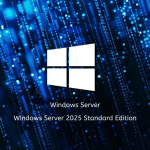Media streaming has become a vital part of our online lives. For a smooth and engaging experience, low latency is essential, whether you’re playing games online, viewing live sports, or attending virtual conferences. A streaming server with a high latency may cause buffering, lost frames, and an overall decline in the user’s experience.
We will look at a number of tactics and methods in this post to help you improve your live streaming server for minimal latency. It is possible to guarantee that your audience will have an excellent streaming experience by putting these improvements into practice.
Understand Latency
Understanding latency is crucial before diving into optimization strategies. The term “latency” in streaming refers to the interval of time that passes between a media unit’s encoding at the source and its decoding and presentation at the viewer’s devices. The following are some of the factors that cause latency:
Network conditions: The dependability and speed of the viewer’s device’s network connection to the streaming server.
Server hardware and software: Streaming server’s effectiveness and processing capacity.
Encoding parameters: the efficacy and quality of the video encoding procedure.
Content distribution and caching over several servers is known as a content delivery network (CDN).
Important Tips for Streaming with Low Latency
Select the Appropriate Encoding Format and Configuration
High-Efficiency Video Coding (HVEC): HEVC is a more effective video codec than H.264, providing lower bitrates and higher compression rates without compromising quality. Lower latency can result from this since it can drastically reduce the quantity of data that has to be delivered.
Variable Bitrate (VBR): This type of encoding lets the bitrate change according to how complicated the video is. This can minimize latency and maximize bandwidth use, particularly in situations with little activity or detail.
Adaptive Bitrate (ABR): This streaming modifies the video’s bitrate in real-time according to each viewer’s network configuration. This guarantees a seamless playback experience even on networks with inconsistent speeds.
Enhance the Hardware and Software of Servers
Strong hardware: Purchase a streaming server that has enough CPU, GPU, and RAM to manage video content encoding, transcoding, and delivery.
Effective software: Make use of software for streaming servers that have been tuned for maximum speed and minimal latency.
Frequent maintenance: To guarantee peak performance, keep your software and hardware updated and carry out routine maintenance.
Make Use of a Content Delivery Network (CDN)
Geographic distribution: A content delivery network (CDN) spreads material among several servers spread out throughout the globe, cutting down on latency and the distance data must travel.
Caching: By allowing viewers to receive essential content from servers close to their location, content delivery networks (CDNs) cache content across edge locations, hence lowering latency.
Load balancing: To avoid overloading and guarantee dependable service, CDNs split up traffic across several servers.
Reduce Overload on the Network
Quality of Service (QoS): Set up QoS protocols on your network to give streaming traffic precedence over other kinds of traffic.
Network optimization: To cut down on latency and packet loss, optimize your network architecture.
Choose a CDN: Select a CDN that has several points of presence and a strong network architecture.
Track and Enhance Efficiency
- Monitoring latency: Monitor latency levels and spot any bottlenecks with the use of monitoring tools.
- Performance analysis: Examine performance information to pinpoint problem areas and enhance your streaming configuration.
- Constant optimization: Modify your streaming setup frequently in response to shifting audience behavior and performance indicators.
Advanced Methods for Streaming with Minimal Latency
Apart from the previously mentioned strategies, there exist several sophisticated methods that may be employed to enhance your streaming server’s low latency performance:
DASH, or dynamic adaptive streaming over HTTP: It enables the streaming server to constantly transition between several video representations in response to the viewer’s network circumstances, guaranteeing a seamless playing experience even in difficult settings.
WebRTC: Low-latency video streaming may be achieved with the usage of this real-time communication technology. By doing away with middlemen like servers, it lowers latency and boosts efficiency.
Edge computing: Edge computing can assist in lowering latency and enhance the overall streaming quality by relocating processing power close to the viewer.
HTTP/3: This more recent iteration of the HTTP protocol provides enhanced dependability and performance, particularly in situations when there is a lot of delay or packet loss.
Conclusion
By putting these strategies into practice and keeping an eye on and improving your streaming server on a regular basis, you can cut latency and may build a streaming system that provides your audience with an improved and absolutely amazing watching experience.
Lynn Martelli is an editor at Readability. She received her MFA in Creative Writing from Antioch University and has worked as an editor for over 10 years. Lynn has edited a wide variety of books, including fiction, non-fiction, memoirs, and more. In her free time, Lynn enjoys reading, writing, and spending time with her family and friends.















